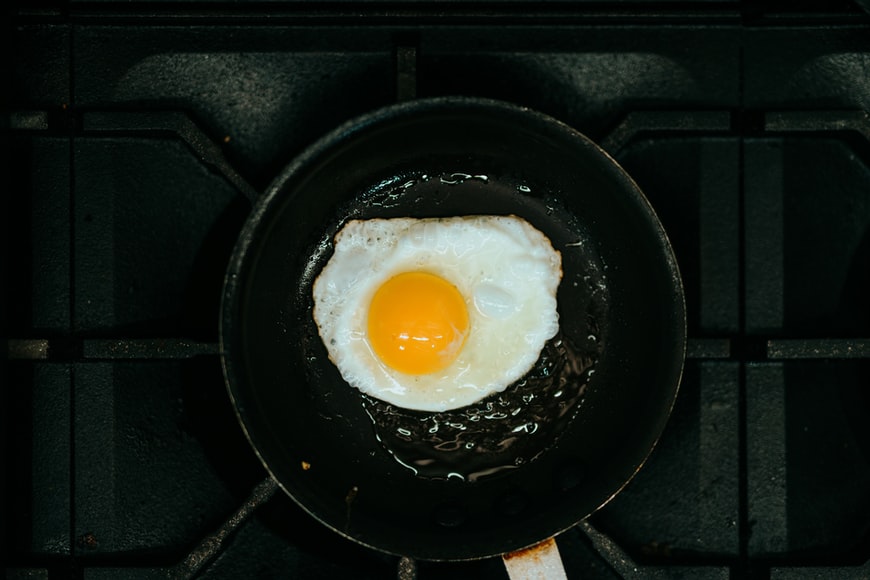Eggs are good for you.
They pack in a bunch of protein, vitamins, and nutrients—and they’re great for energy.
There are, however, a lot of different ways to cook them.
You can make them hard-boiled, soft boiled, poached, over-easy, sunny side up, etc.
But today, we’re going to talk about what is perhaps one of the less appreciated methods for cooking an egg:
Over hard.
Cooking an egg over hard basically means that you pan-fry the egg, similarly to how you would cook it when making it over-easy. However, you don’t leave the yolk or the whites runny when you cook the egg over hard. You fully cook them instead, and you flip the egg and fry it on both sides to achieve this.
Of course, if you want to leave the whites and yolk just a tad bit runny to avoid burning the outside of the egg to a crisp, you can definitely do that—but over hard eggs work well for a number of different types of tastes and situations.
They tend to work particularly well for egg sandwiches (since they won’t get the bread wet). Plus, they’re an excellent option for people who don’t like their eggs runny.
So let’s get started and talk about how to cook perfect over hard eggs.
1. Start With A No-Stick Frying Pan
You want a clean, dry no-stick frying pan to start with.
For best results, you’ll cook over gas. However, an electric burner can definitely work as well.
2. Use Olive Oil
You can use a number of different oils, or even butter to cook an over hard egg.
However, olive oil is generally preferable—seeing as how it’s a more health-conscious choice.
3. Heat The Olive Oil To The Point Where You See A Slight Bit Of Smoke Rising From It
This is best accomplished by setting the burner to slightly above medium heat.
Also, make sure to coat the entire bottom of the pan with oil before cracking the eggs into it.
4. Once Your Oil Has Reached The Desired Temperature, Crack Your Eggs Into The Pan
Cook the eggs for about a minute and a half before you flip them with your spatula.
You want to make sure and let that bottom surface of the eggs cook well before flipping.
At this point, if your oil is hot enough, the egg should be sitting on top of that oil as opposed to sinking all the way down to the pan. This will keep the egg from sticking, and will give you a nice, evenly cooked surface.
It’ll also make flipping the egg that much easier.
5. Don’t Leave The Eggs In The Oil For Too Long
You’ll want to watch how your eggs are cooking and flip them before you burn them.
To figure out exactly when to flip them, watch the whites of the eggs and pay attention to how quickly they solidify.
When they reach the point where you can no longer see the bottom of the pan through the egg, and the bubbles within the whites have begun to disappear, you’ll be about ready to flip.
6. Flip The Eggs One At A Time With Your Spatula
For a perfect flip, briskly push your spatula underneath the egg, lift it from the oil, and flip it over so that the uncooked portion is now facing downwards.
Let the egg cook on that side for about a minute and a half.
Then, you should be good to go with a perfectly cooked, evenly heated over hard egg.
If the edges of the egg are just a little bit crispy, you’ve done it right.
Enjoy!












